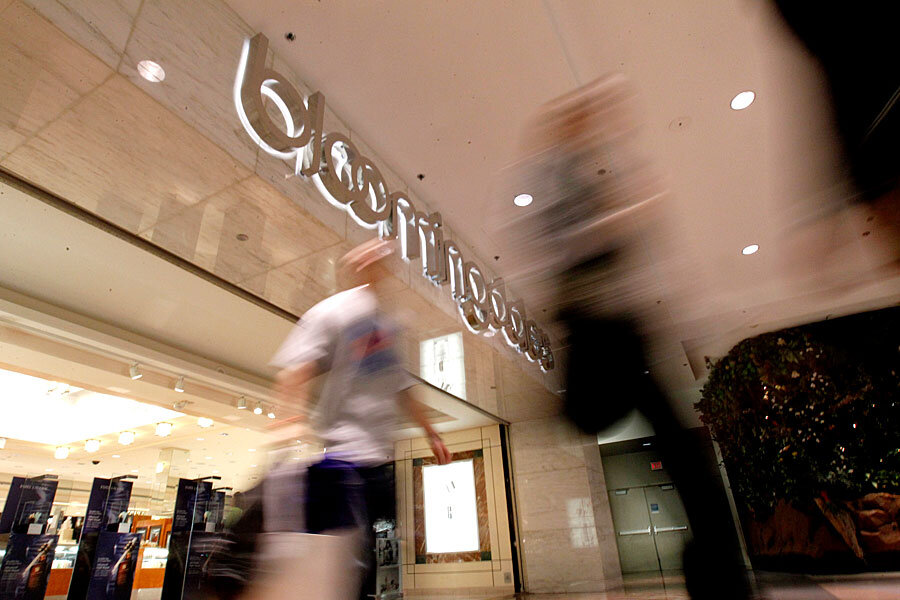'Creepy' Bloomingdale's ad reveals the power of social media
Loading...
At first glance, it’s just another holiday retail ad.
The Bloomingdale’s catalog photo features a woman stylishly dressed in a Rebecca Minkoff outfit tossing her head back in laughter, gazed upon by an expressionless male companion. Maybe he’s admiring her. Maybe he’s annoyed. Or maybe, as some critics are suggesting, he’s scheming to date-rape her.
Considering the caption, the latter interpretation isn’t all that far-fetched. It says, “Spike your best friend’s eggnog when they’re not looking,” a message that, combined with a suggestive photo, can be read as an allusion to sexual assault.
Thousands of consumers subsequently took to Twitter to express their disgust and confusion. It’s abysmal public relations for Bloomingdale’s, certainly, but for everyone else in the world of advertising, the onslaught of angry tweets serves as an invaluable lesson about the power of an unhappy audience armed with social media.
“A Christmas advert by [Bloomingdale’s] encourages men to spike a female friend’s drink,” one woman tweeted, “ ‘Tis the season to be creepy.”
“What the hell Bloomingdale’s,” a reporter writes to his nearly 11,000 followers. “Was Cosby not available to be a pitchman?”
Tuesday afternoon, the upscale department store owned by Macy’s issued a statement of apology. “In reflection of recent feedback, the copy we used in our recent catalog was inappropriate and in poor taste. Bloomingdale’s sincerely apologizes for this error in judgement.”
Because the ad is in print, the retailer cannot retract it.
“It’s an example of a marketer being out of tune with the values of the audience,” Tessa Jolls, president of the Center for Media Literacy, tells The Christian Science Monitor.
Ms. Jolls’s organization is dedicated to promoting deeper understandings of media among both consumers and producers by deconstructing the text and context of ads. The latest Bloomingdale’s controversy, she says, is a prime case of a lack of oversight of the catalog’s advertisers.
“I really doubt if they wanted to consciously say, ‘We promote date rape, we want to send this message to the women we sell products to,’” Jolls explains, but they did make a mistake in misjudging “the context [in which] the ad would be interpreted.”
The interpretation, unfortunately, is far from innocuous.
The ad is perfect for a lesson on consent for her gender studies class, Sarah Murnen, a psychology professor at Kenyon College, told The Washington Post.
“It’s sending the message that it is it okay to have sex with people who are incapable of consent," she said. "These are decisions that should be made consciously and willingly.”
This Bloomingdale’s incident isn’t the first time the public has reacted in outcry to a suggestive ad. In fact, in the past few years, social media has become somewhat of a battlefield on which to combat problematic media.
Anti-sexist group The Representation Project is wildly successful in using hashtags to call out particular advertisers. The organization’s #NotBuyingIt campaign encourages followers to use the hashtag to discuss and call attention to cringeworthy ads, and has since garnered millions of impressions.
The hashtag was unleashed, for instance, when Bud Light released the tagline, “the perfect beer for removing ‘no’ from your vocabulary for the night.” Within two hours, Bud Light's parent company Anheuser-Busch issued a formal apology. Of course, #NotBuyingIt wasn’t the sole force behind the concession, but it definitely made an impact.
Cristina Escobar, a spokeswoman for the project, says that the campaign has made a substantial difference in the landscape of ads since it was launched.
“As a culture and as a movement, we’re really holding companies accountable for the media that they create,” she tells the Monitor. “The tenor of the sexist ads has definitely changed over time.”
Super Bowl commercials in particular, she adds, have changed dramatically since #NotBuyingIt was used to livetweet the game every year since 2013.
But the intent of ads can’t always be judged on a black-or-white basis, Jolls warns, especially when social media plays such a heavy role.
“The interactive nature of media brings a different context to any ad that wasn’t possible before, so the fact that this has been discussed on Twitter, shared on social media,” she says, “is going to change how you look at the message.”
Even as consumers now have a powerful outlet to express themselves and spread awareness about social issues, advertisers have gained both a tool and a liability.
“The power dynamic between the advertiser and the audience is changing. The audience has always had the power of the purse, but now the audience also has the power of the voice,” Jolls says. “So we’re going to a new place for advertisers because they have to look at not only the power of the purse and the power of the voice, but also how the power of the voice affects the purse.”
Ultimately, though, the power of media itself prevails.
“Media is the most pervasive cultural force, and we learn a lot of our messages and a lot of ways of being through them,” Ms. Escobar says. In turn, we latch onto the negative cultural norms the media can accidentally perpetuate and condone.
So when it comes to these social issues, she adds, advertisers and the audience don’t have to be on opposite sides. "Once advertisers hear our message, they stop offering sexist images or products and become eager to work together."
“We have seen the change.”








